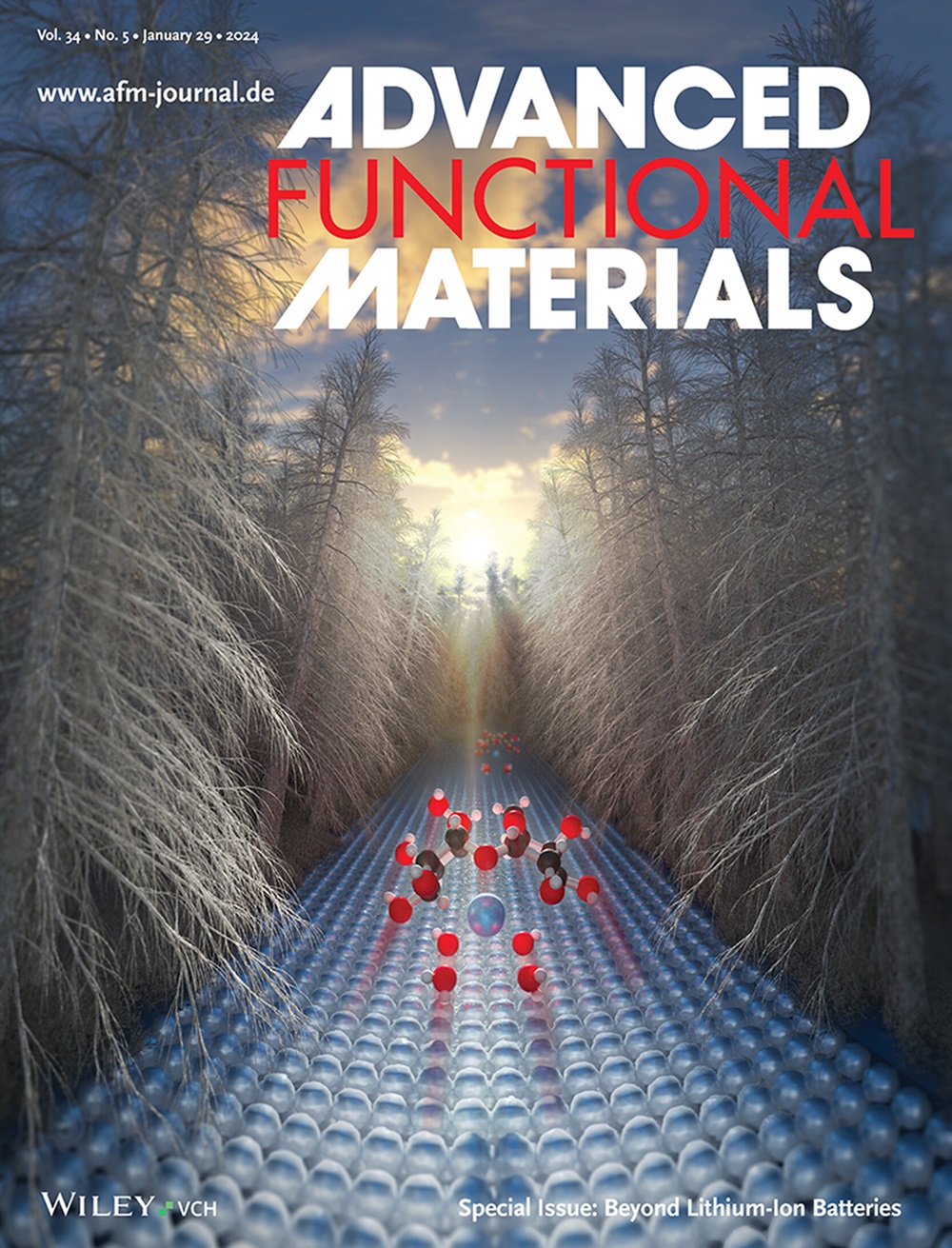不对称阴离子层的构建加速载体反应动力学和热力学促进光催化CO2还原
IF 18.5
1区 材料科学
Q1 CHEMISTRY, MULTIDISCIPLINARY
引用次数: 0
摘要
有效的光催化还原CO2为增值化学品受到光催化剂的载流子分离和转移动力学以及CO2还原过程热力学的极大挑战。本文提出了一种在Bi2WO6(简称BWOC)中具有不对称W-Cl阴离子层的异质结。不对称的W-Cl阴离子层导致电子密度分布不平衡,从而使异质结中建立原子水平的供体-受体结构和较大的静电势,有利于载流子的分离和转移动力学。对CO2光还原过程中间体的模拟表明,具有不对称W-Cl阴离子层的Bi2WO6在*COOH吸热生成的速率决定步骤中具有更小的能势,并且在热力学上更有利于生成CO,这一点通过原位傅里叶变换红外光谱对中间体的检测得到进一步证实。结果表明,BWOC的CO产率为32.11µmol g−¹h−¹,是纯Bi2WO6的近4倍。本研究中不对称阴离子层的构建为设计高效的光催化体系提供了新的思路。本文章由计算机程序翻译,如有差异,请以英文原文为准。

Construction of Asymmetric Anion Layer to Accelerate Carrier Reaction Kinetics and Thermodynamically Promote Photocatalytic CO2 Reduction
The efficient photocatalytic reduction of CO2 into value-added chemicals is significantly challenged by the charge carrier separation and transfer kinetics of photocatalysts as well as the thermodynamics of the CO2 reduction process. Herein, it proposes a heterojunction with asymmetric W-Cl anion layer in Bi2WO6 (abbreviated as BWOC). The asymmetric W-Cl anion layer results in unbalanced electron density distribution and thus enables to establish atomic-level donor–acceptor structure as well as larger electrostatic potential in the heterojunction, which facilitate the charge carrier separation and transfer kinetics. Simulation on the intermediates of the CO2 photoreduction process demonstrates that Bi2WO6 with asymmetric W-Cl anion layer possesses smaller energy barrier for the rate-determining step of *COOH endothermic formation, and it is thermodynamically more favorable to generate CO as further confirmed by the detection of intermediates over in situ Fourier transform infrared spectroscopy. As a result, BWOC achieved rather high CO yield with the value of 32.11 µmol g−¹ h−¹ which is nearly four times higher than that of pure Bi2WO6. The construction of asymmetric anion layer in this work provides new insights for the design of efficient photocatalytic systems toward CO2 reduction.
求助全文
通过发布文献求助,成功后即可免费获取论文全文。
去求助
来源期刊

Advanced Functional Materials
工程技术-材料科学:综合
CiteScore
29.50
自引率
4.20%
发文量
2086
审稿时长
2.1 months
期刊介绍:
Firmly established as a top-tier materials science journal, Advanced Functional Materials reports breakthrough research in all aspects of materials science, including nanotechnology, chemistry, physics, and biology every week.
Advanced Functional Materials is known for its rapid and fair peer review, quality content, and high impact, making it the first choice of the international materials science community.
 求助内容:
求助内容: 应助结果提醒方式:
应助结果提醒方式:


